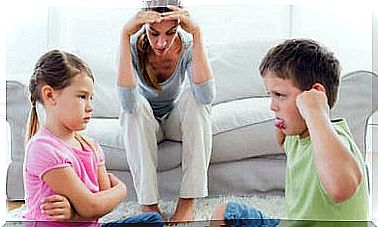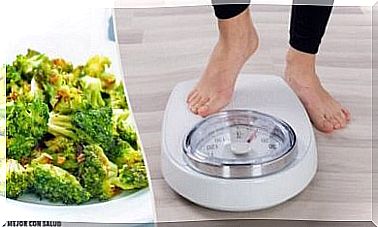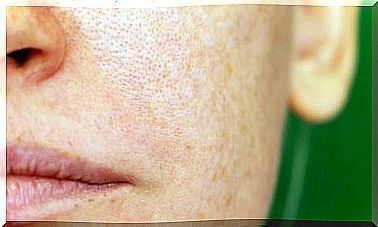Iron Deficiency Anemia In Children: All You Need To Know
Low iron intake in daily diets or replacing breast milk with cow’s milk can trigger iron deficiency anemia in the children. Find out how to recognize this disease, its causes and consequences for health.

Iron deficiency anemia in children is a condition whose main cause is iron deficiency. This mineral is an essential part of hemoglobin, a protein responsible for transporting oxygen in the blood which promotes optimal functioning of body tissues.
Iron deficiency anemia is a common disease in children aged 6 months to 3 years, especially when they are not receiving good nutrition. However, iron deficiency anemia also affects older children and is often a common reason for pediatric visits.
What are its causes and how does iron deficiency anemia manifest itself? To resolve all these questions, it is essential to address the most relevant aspects of this pathology.
So today we are going to review in this article the main triggers and symptoms that make it possible to recognize this disease in time to treat it effectively.
Why does iron deficiency anemia occur in children?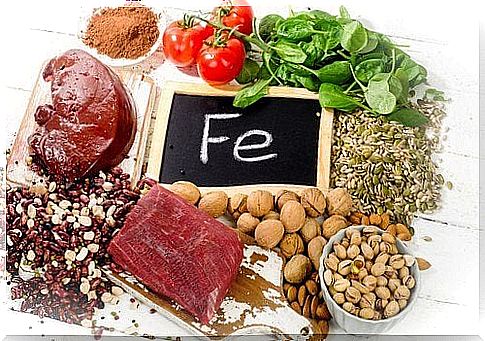
Iron deficiency anemia occurs due to iron deficiency. Iron binds to the pigment in hemoglobin which delivers oxygen to the body’s cells. Oxygen is essential for cells to produce energy and perform their functions.
Iron deficiency anemia is most often caused by sometimes chronic blood loss or by a lack of iron in the diet. Indeed, the body cannot synthesize iron and must therefore draw it from food. More rarely, it can also be attributable to problems with the use of iron in the manufacture of hemoglobin.
In children, low iron absorption is the main cause of iron deficiency anemia. The body obtains this mineral through food and also recycles old red blood cells.
Some factors related to this disease are, among others, the following:
- Poor nutrition of this nutrient
- Inability of the body to absorb iron
- Slow and prolonged blood loss
- Excessive consumption of cow’s milk (especially when it replaces breast milk)
- Food allergy
- Lead poisoning
Adequate nutrition is therefore the key to prevention in cases of iron deficiency anemia not attributable to disease or blood loss.
You have to eat large amounts of foods rich in iron and easily absorbed, such as meat (especially liver), fish, poultry, eggs, legumes (peas and beans), potatoes and rice.
Symptoms of iron deficiency anemia in children
Iron deficiency anemia is the most common form of anemia. Nevertheless, in its initial stages, iron deficiency anemia usually does not cause convincing symptoms. This therefore makes treatment difficult, as the iron level and blood flow may continue to decrease.
Iron deficiency anemia is characterized by a decrease in the number of red blood cells in the blood or in their hemoglobin content. The main symptoms, when there are any, are therefore fatigue, a pale complexion and more pronounced shortness of breath on exertion.
During its course, iron deficiency anemia produces the following symptoms in particular in children:
- Bluish or very pale color of the sclera of the eyes
- Fragile and brittle nails
- Decreased appetite or cravings for usual foods
- Weakness and prolonged fatigue
- Headache and dizziness
- Irritability and low energy level
- Difficulty breathing and tachycardia
- Pale skin
- Difficulty gaining weight and growing taller
Since the symptoms of iron deficiency anemia may be due to another health problem, laboratory analysis of a blood sample must then be done before a diagnosis can be made. A complete blood count, ie a complete blood count, is therefore usually prescribed by the doctor.
Diagnosis of iron deficiency anemia in children
To diagnose iron deficiency anemia in children, the doctor then performs a physical assessment and questioning. Then he takes a blood sample and sends it to the lab for analysis. This test allows you to know if the red blood cells are deficient in iron.
In general, the specific tests to confirm the disease are as follows:
- Hematocrit : can detect anemia and other blood disorders
- Serum ferritin : indicates the amount of iron in the body
- Serum iron : indicates the amount of this element in the blood
- Total iron binding capacity (CTFH) : used to measure the ability of a protein called transferrin to transport iron through the blood
Prevention of iron deficiency anemia in children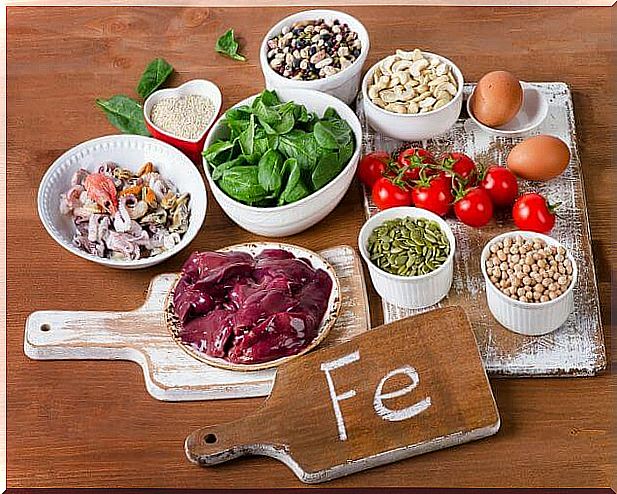
There are two basic preventive measures against this type of disease. These two measures consist of following an appropriate diet and carrying out regular check-ups. In addition, in all cases, the parents play a very important role, because it is they who guarantee the care of the child.
Good eating habits are especially important for children. Also, iron is absorbed more easily by the body if iron supplements and iron-rich foods are taken with citrus juices.
In addition, it is extremely important that breastfed babies receive iron supplements in the form of drops or iron fortified cereals after the age of 6 months.
Follow a proper diet
Children should consume as much breast milk as possible until they are 6 months old. Although some do not know it, this food allows better absorption of iron and is the key to the development of the immune system.
- If your baby cannot take maternal food, the chosen supplement should be fortified with iron.
- From 5 or 6 months, more nutrients can be provided with fruits, vegetables and lean meats.
- Avoid giving them cow’s milk before 12 months.
- When the child is older, a balanced and varied diet may be sufficient to achieve the correct iron values.
Consult the pediatrician
Any manifestation of iron deficiency anemia in children should be managed by a pediatrician. Likewise, if the child has a risk factor or a history, you should have regular medical examinations.
Treatment of iron deficiency anemia
Due to their age and developmental process, children only get a small amount of iron from the foods they eat.
Therefore, in order to get the necessary amount of iron (around 8 or 10 mg per day), it is important to add foods that specially contain iron to their diet.
- Lean meats (chicken, turkey, pork)
- Sea food
- Eggs
- Legumes (dry beans, lentils, soybeans)
- Liver of beef
- Oatmeal
- Peanut butter
- Dried fruits
- Plum juice
- Spinach
- Whole grains
When a balanced diet is not enough to treat iron deficiency and anemia, your doctor may suggest oral iron supplements. Under no circumstances should these iron or vitamin supplements be administered without the supervision of the pediatrician.
To consider !
Iron deficiency anemia in children that is not combated in time can interfere with their learning and development process.
Low iron levels reduce children’s ability to pay attention and alertness. Therefore, being able to detect the symptoms of iron deficiency anemia in time is crucial to avoid these problems.
Mild anemia has no major health consequences. If there are no other health issues, the physical symptoms are the ones we have cited. However, if iron deficiency anemia is not treated in time, its worsening can lead to serious health problems for children.
Untreated iron deficiency anemia can become quite serious and affect the daily life of children. Infants with untreated anemia may have stunted growth and intellectual disability (learning difficulties).
This type of anemia usually does not cause complications, but it can occur again; therefore, regular medical monitoring is necessary. Children with this type of iron deficiency anemia are more likely to get infections.
Fortunately, taking iron supplements quickly corrects the effects of anemia. However, it is still important to pinpoint the cause, as it could be the first sign of a more serious disorder.
Iron deficiency anemia is iron deficiency. The causes behind this deficiency can be: heavy periods in young women, bleeding, an unbalanced diet, or poor intestinal absorption.
Iron deficiency anemia is a common disorder, more common than it seems, especially in young people. This disorder can also be the consequence of a simple temporary imbalance, such as is the case during adolescence, pregnancy or breastfeeding.
Let’s see together in this article the different ways to prevent and fight iron deficiency anemia naturally, that is to say without resorting to food supplements.


